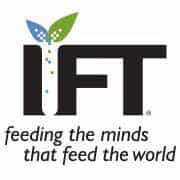
Five reasons why sugar is added to food
Institute of Food Technologists
CHICAGO--From a food science and technology perspective, sugar (sucrose) plays several roles when it comes to the functional properties in food. In the September issue of Comprehensive Reviews in Food Science and Food Safety published by the Institute of Food Technologists (IFT), authors from the University of Minnesota write about the functional properties of sugar and why they are often added to foods.
1. Taste: Sweetness improves the palatability of many foods. Adding sugar to foods with high nutrient quality may increase the chance they are consumed. In addition, sugar plays an important role in contributing to the flavor profile of foods by interacting with other ingredients to enhance or lessen certain flavors.
2. Color and Flavor: The Maillard reaction is a chemical reaction between amino acids and reducing sugars that gives browned foods their desirable flavor; and caramelization is fundamental to the formation of color in several food products and can't happen without the addition of sugar. Caramelization happens when sugar is heated to a certain temperature and is used in a wide variety of products including sauces, candies, breads, jams, and dessert wine (Kroh, 1993). The Maillard reaction also provides desirable flavor formation in foods such as baked goods, chocolate, coffee and meat (Danehy and Wolnak, 1983).
3. Bulk and Texture: Sugar provides bulk to foods which impacts the mouthfeel and texture. Sugar affects multiple chemical reactions that form the texture of baked goods, ice cream, candies, and jams, preserves and jellies.
4. Fermentation: Fermentation is a process in which microorganisms in the absence of oxygen generate energy by oxidizing carbohydrates, like sugar. Sugar aids in the fermentation of many common food and beverage products produced including yogurt, vinegar, sour cream, wine, beer, bread, cheese, soy sauce, and sauerkraut.
5. Preservation: The hygroscopic nature of sugar plays a crucial role in reducing water activity in foods. Hygroscopic is defined as the ability to absorb water from the surrounding environment which helps in preserving and extending the shelf-life of food products (Kitts, 2010). Sugar also prevents baked good from becoming dry or stale (Spillane, 2006) and it also preserves the color of frozen fruits and jellies.
###
This article in Comprehensive Reviews in Food Science and Food Safety also discusses the challenges of labeling added sugar and the technical issues associated with replacing added sugar in foods.
Read the full article here:
http://onlinelibrary.
About IFT
Founded in 1939, the Institute of Food Technologists is committed to advancing the science of food. Our non-profit scientific society--more than 17,000 members from more than 95 countries--brings together food scientists, technologists and related professionals from academia, government and industry. For more information, please visit ift.org.
